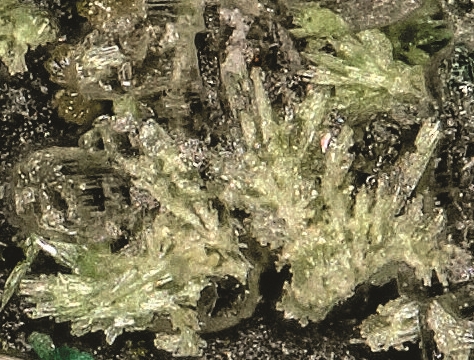
Hagstromite crystals (photo credit: AR Kamph)
Anthony
R. Kampf1,, Robert
M. Housley2, Stuart J. Mills3,
George R. Rossman2
and Joe Marty4
1Mineral
Sciences Department, Natural
History Museum of Los Angeles County, 900 Exposition Blvd., Los Angeles, CA 90007,
U.S.A.
2Division
of Geological and Planetary Sciences, California Institute of
Technology,
Pasadena, CA 91125, U.S.A.
3Geosciences,
Museums Victoria, GPO Box 666, Melbourne 3001, Victoria, Australia
